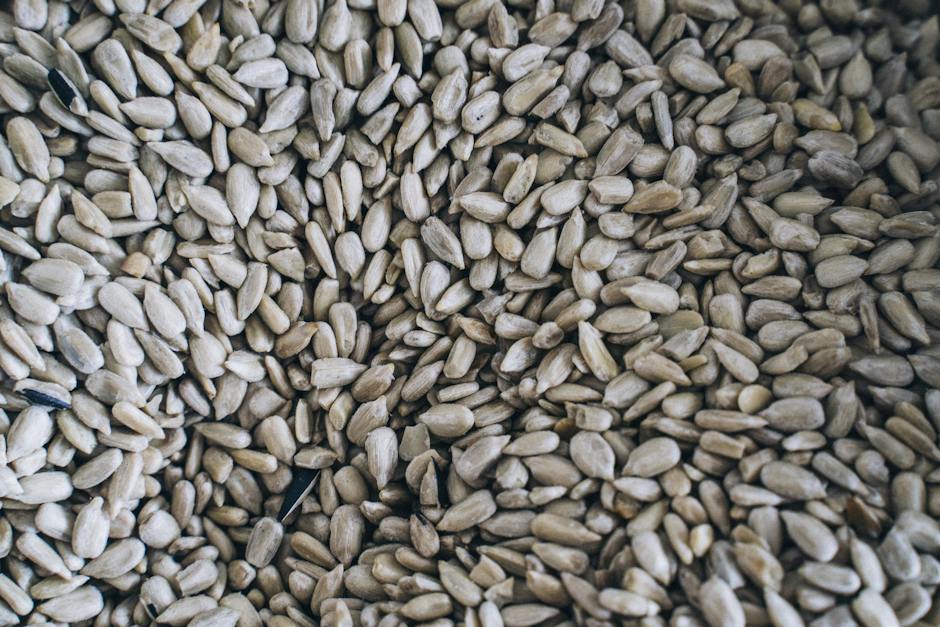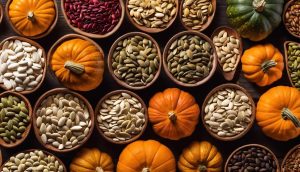Harvesting and Saving Pumpkin Seeds: A Guide on How to Preserve Them for Planting Next Season

Harvesting and saving pumpkin seeds is a rewarding and cost-effective way to ensure a bountiful harvest in the next growing season. By saving your own pumpkin seeds, you have control over the quality of the seeds and can preserve heirloom varieties that may not be readily available in stores. This process is relatively simple and can be done with just a few tools and some patience.
Key Takeaways
- Harvesting and saving pumpkin seeds is a simple and cost-effective way to ensure a bountiful harvest in the next season.
- Saving pumpkin seeds allows you to preserve the unique characteristics of your favorite pumpkin varieties.
- Pumpkin seeds should be harvested when the pumpkin is fully ripe and the seeds are mature.
- To harvest pumpkin seeds, cut open the pumpkin, remove the seeds, and separate them from the pulp.
- Clean and dry pumpkin seeds thoroughly before storing them in a cool, dry place for up to 6 years.
Benefits of Saving Pumpkin Seeds
Saving pumpkin seeds offers several benefits for gardeners. Firstly, it is a cost-effective way to grow pumpkins year after year. Instead of purchasing new seeds each season, you can simply save the seeds from your own pumpkins. This can save you money in the long run, especially if you grow a large number of pumpkins.
Secondly, saving pumpkin seeds allows you to have control over the quality of the seeds. By selecting the healthiest and most robust pumpkins to save seeds from, you can ensure that your future plants will be strong and productive. This is particularly important if you are growing specific varieties that may not be readily available in stores.
Lastly, saving pumpkin seeds allows for the preservation of heirloom varieties. Heirloom pumpkins are varieties that have been passed down through generations and are often prized for their unique flavors, colors, and shapes. By saving and sharing these seeds, gardeners can help to preserve these rare and valuable varieties for future generations.
When to Harvest Pumpkin Seeds
Knowing when to harvest pumpkin seeds is crucial for their successful storage and future germination. The first sign that a pumpkin is ready for seed harvesting is when it reaches full maturity. This is typically indicated by a hard rind that cannot be easily punctured with a fingernail. Additionally, the stem of the pumpkin should be dry and brown.
Timing considerations are also important when harvesting pumpkin seeds. It is best to wait until the pumpkin has fully ripened on the vine before harvesting. This allows the seeds to fully develop and ensures that they will be viable for planting in the next season. However, it is important to harvest the seeds before the pumpkin begins to rot or decay, as this can affect the quality of the seeds.
How to Harvest Pumpkin Seeds
| Step | Description |
|---|---|
| 1 | Cut open the pumpkin and remove the seeds. |
| 2 | Rinse the seeds in a colander to remove any pulp or strings. |
| 3 | Spread the seeds out on a baking sheet and let them dry for a few days. |
| 4 | Roast the seeds in the oven at 350°F for 10-15 minutes. |
| 5 | Season the seeds with salt, garlic powder, or other spices if desired. |
| 6 | Store the seeds in an airtight container for up to a month. |
Harvesting pumpkin seeds is a relatively simple process that can be done with just a few steps. First, start by cutting open the pumpkin using a sharp knife. Be careful not to cut too close to the seeds, as this can damage them. Once the pumpkin is open, use a spoon or your hands to scoop out the seeds and pulp.
Next, separate the seeds from the pulp. This can be done by placing the seeds in a bowl of water and gently rubbing them between your fingers. The pulp will float to the top, while the seeds will sink to the bottom. Once separated, discard the pulp and rinse the seeds thoroughly.
Cleaning and Preparing Pumpkin Seeds for Storage
After harvesting, it is important to clean and prepare pumpkin seeds for storage. Start by removing any remaining pulp or debris from the seeds. This can be done by rinsing them under running water or soaking them in a bowl of water and gently agitating them.
Once clean, it is important to dry the pumpkin seeds thoroughly before storing them. There are several methods for drying pumpkin seeds, including air drying, oven drying, and using a food dehydrator. Air drying is the simplest method and involves spreading the seeds out on a clean towel or paper towel and allowing them to air dry for several days.
Storing Pumpkin Seeds for Longevity
Proper storage is crucial for maintaining the viability of pumpkin seeds over an extended period of time. The best storage conditions for pumpkin seeds are cool, dry, and dark. It is important to keep them away from moisture and heat, as these can reduce their viability.
When it comes to choosing a container for storing pumpkin seeds, opt for airtight containers that will keep out moisture and pests. Glass jars with tight-fitting lids or plastic containers with seals are good options. It is also a good idea to label the containers with the variety and date of harvest to keep track of the seeds.
Tips for Preserving the Viability of Pumpkin Seeds
To preserve the viability of pumpkin seeds, it is important to take certain precautions. Firstly, avoid exposing the seeds to moisture and heat, as this can reduce their germination rate. Store them in a cool, dry place away from direct sunlight.
Secondly, it is important to label and organize the seeds properly. This will make it easier to find and use them in the next growing season. Label each container with the variety and date of harvest, and consider organizing them by type or size.
Testing the Germination of Stored Pumpkin Seeds
Before planting saved pumpkin seeds in the next season, it is important to test their germination rate. This will give you an idea of how many seeds are still viable and will help you determine how many to plant.
To test the germination of pumpkin seeds, place a few seeds on a damp paper towel or in a small container with moist soil. Keep them in a warm location and check them regularly for signs of germination. If a high percentage of seeds germinate, you can be confident that they are still viable.
Planting and Caring for Pumpkin Seeds in the Next Season
Once you have tested the germination of your saved pumpkin seeds and determined that they are viable, it is time to plant them in the next season. Start by preparing the soil by loosening it and adding compost or organic matter for nutrients.
Plant the pumpkin seeds at a depth of about 1 inch and space them according to the variety’s recommendations. Water the seeds thoroughly after planting and keep the soil consistently moist until the seeds germinate. Once the seedlings emerge, water them regularly and provide them with adequate sunlight and nutrients.
Conclusion and Final Thoughts on Saving Pumpkin Seeds
Saving pumpkin seeds is a cost-effective and rewarding way to ensure a bountiful harvest in the next growing season. By following the steps outlined in this article, you can successfully harvest, clean, store, and plant pumpkin seeds for future use. Not only does saving pumpkin seeds save money, but it also allows for control over seed quality and the preservation of heirloom varieties. So why not give it a try and start saving your own pumpkin seeds today?
If you’re interested in learning more about preserving pumpkin seeds for planting, you might find this article from Lawn World helpful. It provides a step-by-step guide on how to properly preserve pumpkin seeds to ensure successful germination. Check out the article here for valuable tips and techniques.
FAQs
What is the best time to harvest pumpkin seeds?
The best time to harvest pumpkin seeds is when the pumpkin is fully ripe and the skin has turned a deep, rich color.
How do I extract pumpkin seeds from the pumpkin?
To extract pumpkin seeds from the pumpkin, cut the pumpkin open and scoop out the seeds with a spoon. Rinse the seeds in a colander to remove any remaining pumpkin flesh.
How do I dry pumpkin seeds for planting?
To dry pumpkin seeds for planting, spread them out in a single layer on a flat surface and allow them to air dry for several days. Stir the seeds occasionally to ensure even drying.
What is the best way to store pumpkin seeds for planting?
The best way to store pumpkin seeds for planting is to place them in an airtight container and store them in a cool, dry place. Avoid exposing the seeds to moisture or extreme temperatures.
How long can pumpkin seeds be stored for planting?
Pumpkin seeds can be stored for planting for up to 6 years if they are properly stored in a cool, dry place. However, it is recommended to use seeds that are no more than 2-3 years old for optimal germination rates.




